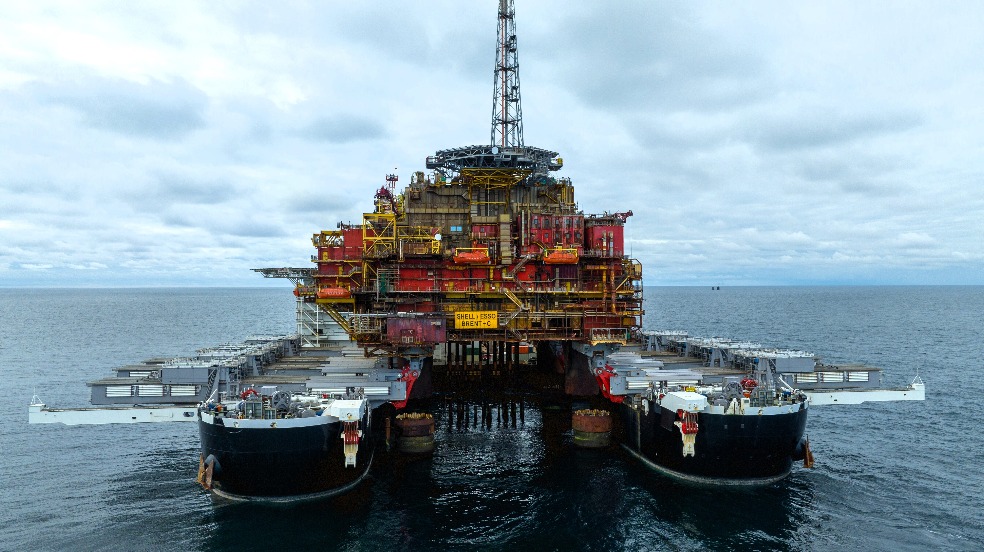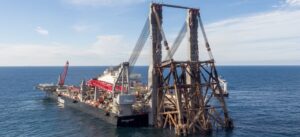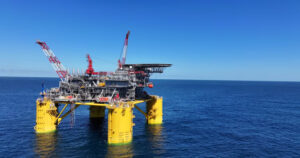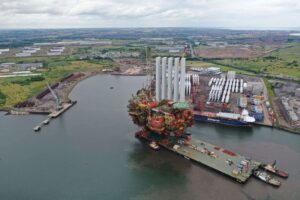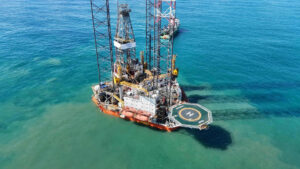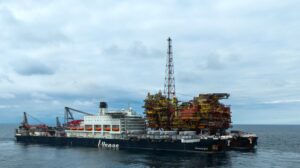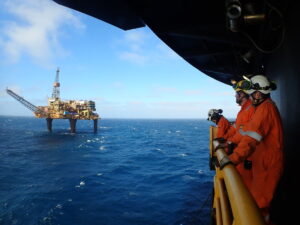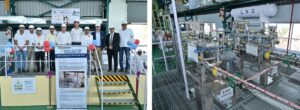Decade-long decom ops at Shell’s UK oil & gas field enter home stretch as final mammoth topside is skidded quayside
The last remaining topside from a Shell-operated oil and gas field situated northeast of the Shetland Islands has been skidded to the quay by Dutch heavy lifting and transport provider Mammoet.

Operated by Shell and located 186 kilometers off the coast of Shetland Islands, the Brent field was one of the largest oil and gas fields in the North Sea. Described as iconic, the field gave name to the oil benchmark used to price internationally traded crude oil.
It was once home to four oil and gas platforms, one jacket-based, Alpha, and three gravity-based, Bravo, Charlie, and Delta. Brent Delta ended production in 2011, Alpha and Bravo in 2014, with Charlie – whose topside was the heaviest – as the last platform standing.
Allseas removed Brent Charlie platform topsides from the UK sector of the North Sea on July 9 using its Pioneering Spirit giant heavy lift vessel in what it described as the single-lift removal as the heaviest offshore lift ever performed. After being transported to shallow waters, the topside was transferred onto Iron Lady, Allseas’ purpose-built cargo barge. The topside reached Able Seaton Port some ten days later.
The platform’s concrete legs were submerged in seawater for over 40 years, which is why Mammoet needed to overcome various challenges to bring the 31,000-ton topside onshore.
Since careful engineering was said to be required to ensure the stability needed to carry out this operation safely, the Dutch player employed its tried-and-tested solution used for the previous three topsides to remove and transport Brent Charlie to the port for decommissioning.
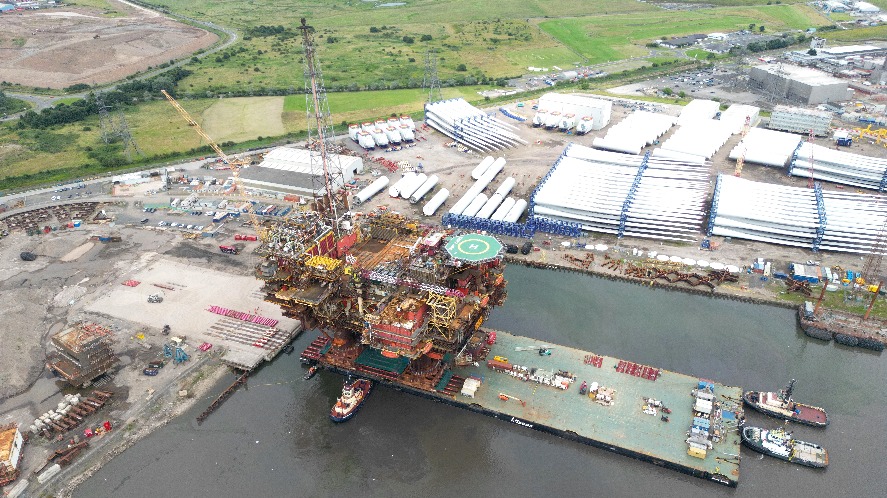
“We have a pragmatic approach, which is required on jobs like this,” noted Leo de Vette, Project Manager at Mammoet. “It’s really a team operation, you must do it together. Time is of the essence, so equipment can be moved to the next job. Once the topside is on the barge, there is only one priority – get it off as safely and efficiently as possible.”
The topside was skidded over 12 skid tracks, which needed to be aligned with the skid tracks previously installed on the barge, in two stages. It was first skidded five meters to the aft of the barge, followed by a 12-hour break to allow for further settling. Then, it traveled the remaining 130 meters onto the quay, to its final position.
A configuration of 76 skid shoes divided between the four legs of the platform and 40 push-pull units were used to skid the topside 15 meters per hour. The combined pushing capacity was 3,320 tons and the total lift capacity 51,000 tons.
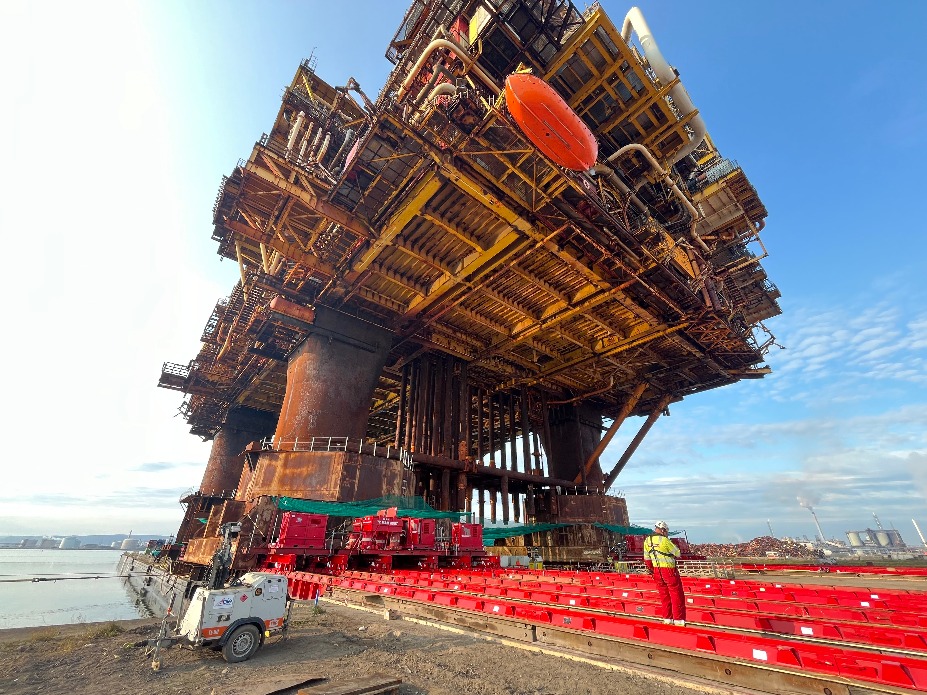
Suspended netting was used to collect any falling debris and marine growth that might come away from the structure. Furthermore, all movements were remotely controlled from a control room to ensure safety by minimizing the presence of people underneath the platform.
Managing Brent Charlie’s four legs, which rendered the structure less stable, was said to be one of the operation’s biggest challenges. Mammoet said it solved this by placing hydraulic cylinders under each leg, and connecting cylinders between both pairs of two legs to ensure the pressure on each is the same.
“When you look at stability, three legs are always stable; four legs are not,” explained Richard Verhoeff, Mammoet Sales Director. “You try to keep a three-point suspension when performing a load-in, and still need to achieve that even with four legs. That’s where hydraulic grouping comes in very handy.”

